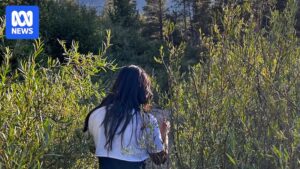Kiani, Melbourne Zoo’s most celebrated Sumatran orangutan, led a life that was as vibrant as it was diverse. Known for her artistic flair, she painted, played video games, and even had a penchant for films. Her charm was such that actress Sigrid Thornton lent her voice to Kiani in a television commercial. Kiani’s unique fascination with bearded men only added to her allure. However, when she passed away last year at the age of 45, she left behind not just her daughter, Gabby, but also a legacy that transcends her physical presence.
While Kiani is no longer alive, her essence continues to captivate audiences at the Melbourne Museum’s new science gallery, Our Wondrous Planet. Here, she is immortalized through taxidermy, posed gracefully as if hanging from a branch. Moreover, several floors below, her cells are preserved in a cryobank, holding the potential for future cloning.
The Art and Science of Taxidermy
As Nurin Veis, director of the Museums Victoria Research Institute, pondered, “What does dead mean? Is dead forever?” These questions resonate deeply in the museum, which has embraced its taxidermy heritage despite recent challenges, including investigations by anti-corruption authorities and financial constraints.
Kiani’s transformation from a living being to a museum exhibit was a meticulous process. After her arthritis led to euthanasia, photos captured her natural motion, enabling preparators to recreate her form using polystyrene and clay. Her coat was tanned and carefully draped over this new structure, complete with a branch to hang from.
Before Kiani, another beloved zoo resident, Bong Su the Asian elephant, underwent a similar transformation after his death in 2017. The public mourned his passing, yet his presence endures, thanks to the museum’s skilled preparators.
Inside the Museum’s Preparatory Department
Hidden beneath the museum’s grand halls lies a labyrinth devoted to taxidermy, one of the largest of its kind globally. Senior preparator Dean Smith, who began his journey as a volunteer nearly four decades ago, explains, “Taxidermy is the arranging of skin. ‘Taxis’ is motion and ‘dermis’ is skin, so ‘motion of the skin’.”
These lifelike figures are more than preserved specimens; they are artistically arranged sculptures. The department employs a blend of old and new techniques, using 3D printers alongside traditional materials like coconut fiber and cotton wool. “Some older techniques are potentially faster and might be more long-lasting,” notes department manager Steve Sparrey.
“We want people to connect with these objects and specimens. Eyes are one of the very important aspects. The first thing people do is have a look at the eye of a specimen that’s looking at you too,” says Smith.
Scientific and Educational Endeavors
Beyond display, the department conducts “skin studies” to gather morphological data, tracking species variations over time. This research is vital for understanding changes in populations, such as the size evolution of little penguins over a century.
Challenges abound in this environment, from the risk of large specimens like elephants to the threat of tiny insects and bacteria. Yet, these same insects can be allies; domestic beetles are employed to clean bones with precision.
The preparatory department also houses giant freezers to preserve specimens indefinitely and a post-mortem room equipped for larger tasks. Sparrey reflects on the emotional journey of taxidermy, viewing it as providing creatures with a “second life.”
Exhibition and Environmental Awareness
Upstairs, the Our Wondrous Planet exhibition invites visitors to explore their connection to the Earth. Interactive displays, such as pulsating lines on a plate and a maze of plant roots, emphasize humanity’s role in the planet’s ecosystem.
The gallery’s design, with its organic curves and vibrant colors, immerses visitors in a living rainforest experience. Interactive elements allow visitors to contribute to coral spawning and plant growth, fostering a sense of responsibility for the environment.
Amidst the specimens, including giraffes, jaguars, and emperor penguins, the exhibition highlights the urgency of climate change. Yet, it focuses on hope and possibility, encouraging visitors to envision and take steps toward a cleaner future.
As Kiani’s cells remain on ice, the museum’s efforts underscore a commitment to preserving not only the past but also the potential for future scientific breakthroughs. The exhibition serves as a poignant reminder of our interconnectedness with the natural world and the legacy we leave behind.







